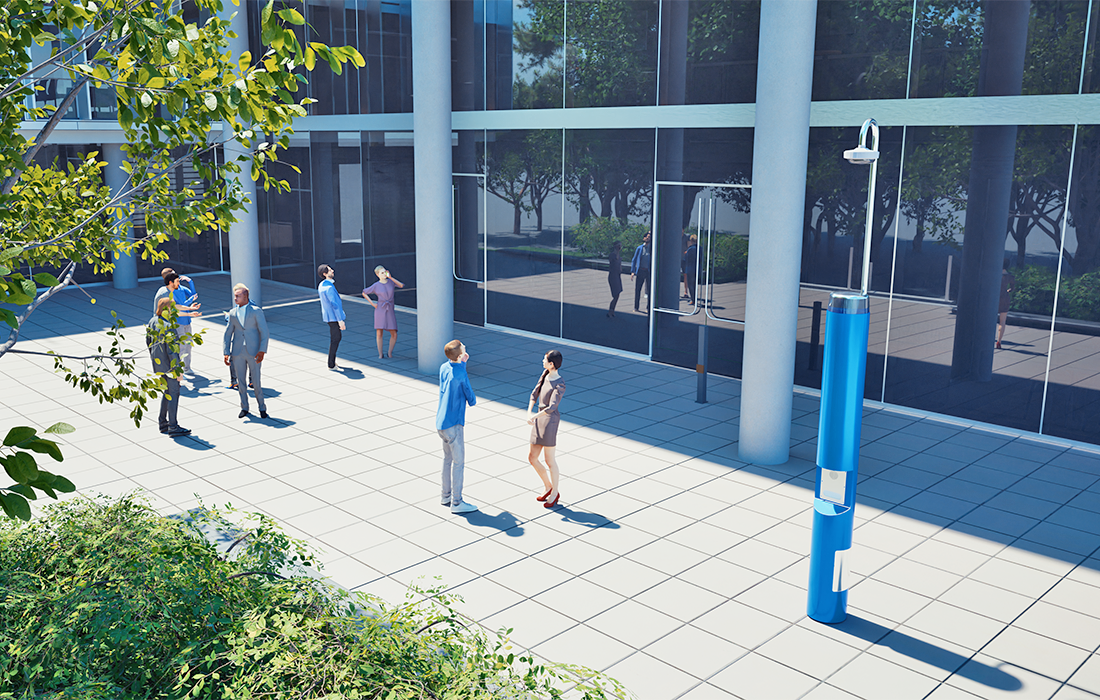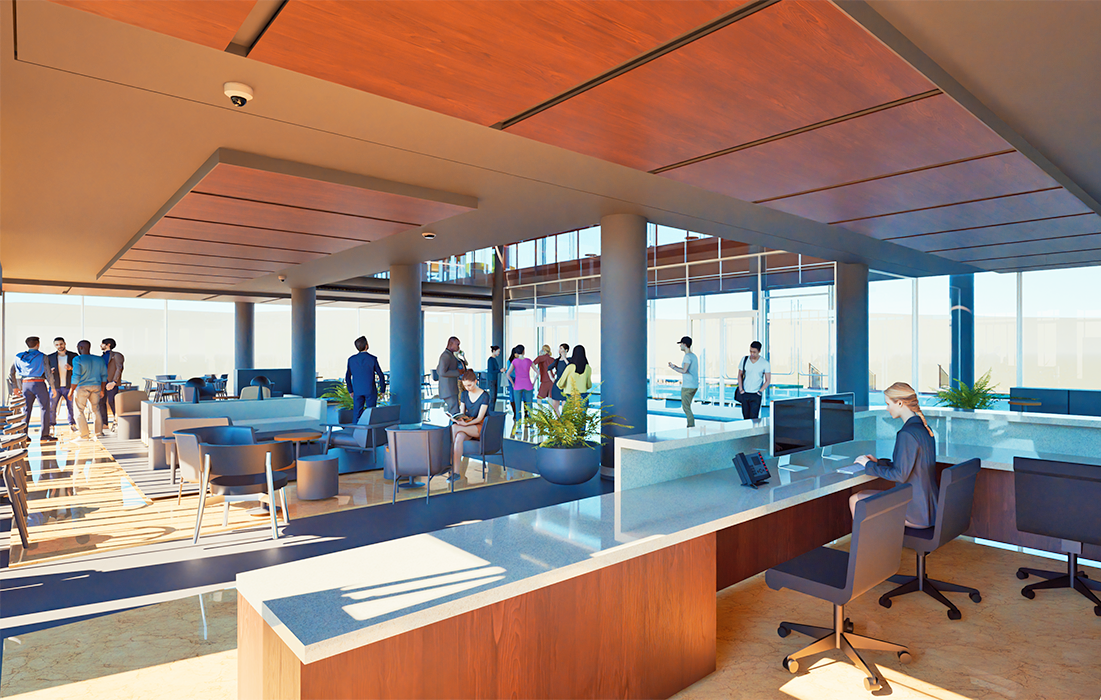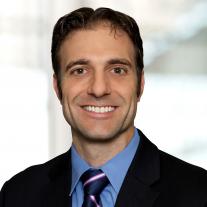Education & Public Safety
Strategic thinking plus integrated physical, operational and electronic security enhances safety and resilience without compromising openness and spontaneity.
Overview
Education requires an environment where students and faculty feel welcomed and safe. Our experts collaborate with institutional and community stakeholders, facilities groups, security departments and public safety groups, as well as architects, engineers and landscape architects, to craft customized strategies for everything from a single building to a campus or an entire institutional portfolio.
Big-Picture Strategy
The most effective way to create protected, comfortable learning spaces is through holistic planning and implementation that create overlapping security measures that reinforce one another seamlessly – and unobtrusively.
Our team has a thorough understanding of public safety principles and the needs of academic institutions. We help our clients understand the issues at stake and then work hand-in-hand with them to devise strategic solutions that start with architecture and function. This approach minimizes the need for conspicuous and costly security measures. And with in-house specialists in resilience master planning, we can broaden safety planning to include threats from natural hazards like flooding, storms, extreme heat and cold, and infectious disease, enhancing both security and the longevity of campus facilities.
Multidisciplinary Methods Meet Multifaceted Challenges
Once the big-picture strategy is set, we can design and implement its systems. Because our expertise spans physical protective design, operational security and electronic security, we can provide truly integrated solutions for new construction, renovation and the operation of everything from academic buildings to residences, sports complexes, cultural venues and outdoor spaces.
"There are long-term benefits to early safety planning. A lobby layout that creates blind spots could require more security staff for the lifespan of the building. But design that lobby with security in mind, and you need fewer guards. The building is more secure, and you get a huge cost savings over time."
Collaborative Approach for Synergistic Results
Every academic institution prioritizes the safety of students and staff, but each has its own unique set of challenges and opportunities. So we dig deep to uncover all the details that can affect risk levels – and provide options for integrated, cost-effective solutions that reduce the incidence of crime and increase the perception of safety.
A good security strategy is based on a thorough understanding of intended users, functions and operations, so we ask questions, lots of them. We talk with project planners, user groups, facilities personnel, public safety staff and local law enforcement. We review access points, circulation, adjacencies and programming. The information we uncover is critical for aligning physical design with technological solutions – such as video surveillance systems, access controls and screening – and security policy and operations.
Then we work with these stakeholders to help them understand all the available options and how each will address the often-competing needs and priorities of the project. This holistic approach can reveal opportunities for synergistic solutions, with components designed to support and reinforce one another. A single design choice can be made to serve double or even triple duty: a low wall that is properly placed and designed, for example, can act as a vehicle barrier, divert flood waters from an entrance and provide a pleasant seating area. And when public safety measures are considered during design, critical aspects of the design can be shaped to enhance safety with minimal negative impact on the user experience.
"Instead of saying, ‘Put a camera here and a barrier there,’ we take a more customized approach: ‘Let’s understand what you want and what you need, and we’ll help you get to the right solutions.'"
Single Source for Seamless Solutions
Today’s security challenges come in a variety of forms, from active shooter or assailant deterrence and mitigation to civil-disturbance containment, protest-response strategies, mental-health interventions and suicide prevention. Thornton Tomasetti’s protective design engineers team with our electronic and operational security experts – including specialists in CPTED, cybersecurity, insider-threat mitigation and former crisis management and university threat-management personnel – as well as our resilience professionals, craft fully integrated programs for preventing, managing, responding to and recovering from hazards of every kind. And we can combine our suite of security-related services with our traditional building design offerings in structural design, façade engineering and sustainability consulting for a truly one-stop solution.
Here's How
At Thornton Tomasetti, we offer a range of multidisciplinary services that help educational institutions provide safe, secure, welcoming spaces for students, staff and visitors.
Security Planning
- Threat, Vulnerability and Risk Assessment (TVRA), Security Audits & Benchmarking. We gather and analyze detailed information to quantify the risk associated with a wide range of threats – from traditional security concerns to risks posed by mental health or infectious disease. This TVRA serves as a project-specific guide for the development and prioritization of mitigation measures. We can also assess your current security and use empirical methods to compare it against other, similar facilities or institutions.
- Emergency Preparedness Planning. We collaborate with stakeholders and design teams to develop actionable plans for a variety of hazardous events to protect life, limit economic losses, instill organizational and brand confidence, minimize downtime, and promote operational continuity.
PHYSICAL SECURITY
- Crime Prevention Through Environmental Design (CPTED). Our NICP-certified experts apply four core principles – natural surveillance, natural access control, territorial reinforcement, and maintenance and management – to increase safety and security while creating built environments that provide a sense of comfort and community well-being.
- Perimeter/Site Hostile Vehicle Mitigation (HVM) Assessment and Design. Our team collaborates with planners and landscape architects to identify risks associated with intentional or incidental vehicle impacts or attacks. We tailor form and function to craft appropriate protective measures without security defining the design.
- Civil Disturbance Target Hardening. We establish designated safe spaces and help institutions develop governing policies that facilitate protests while managing organizational disruptions and that guide appropriate responses for civil disturbances.
- Ballistics Protection. We work with designers to incorporate ballistic-resistant materials without compromising architectural intent. We also develop plans for areas of refuge or cover, lockdown and lockout strategies, controlled-access systems and frictionless weapons detection technologies.
- Electronic Security Systems: Condition Assessment, Design, Expansion and Replacement. Our team of experienced practitioners conducts on-site reviews of access control and video surveillance systems to assess operational longevity, gaps in protection and opportunities for improvements. We also design new and replacement systems.
- Access Control and Weapons Detection Consulting. We evaluate and propose systems ranging from high security X-ray and magnetometer systems to frictionless, noninvasive, high throughput technologies. And because we don’t partner with manufacturers, we continually review all the latest developments in the fast-evolving technologies of weapons design and detection so we can recommend what’s best for each project.
- Video Management Systems Consulting. Our manufacturer-agnostic experts advise facility owners on options that integrate seamlessly into their unique security operations strategies and future flexibility needs.
- Video Analytics and AI Consulting. Combining video hardware and other sensors with software in a video management system can improve security while minimizing operational costs. Our experts monitor technological developments from all manufacturers and provide objective, independent advice on the optimal systems for each project.
- Faculty and Student Preparedness Training. Interactive and informative active-shooter training that empowers participants to be part of the solution, not just the response.
- Security/Public Safety Department Design. Whether you're revitalizing your department or building it from the ground up, we can provide comprehensive consulting on department design, staffing, policies and training exercises.
- Emergency Planning. Our services include staff training through tailored tabletop exercises, development of emergency operations and business continuity plans, and hands-on support for on-site special events.
- Open-Source Intelligence. We offer expert guidance to enhance your organization's threat awareness and brand management. We help your staff learn to monitor, analyze and respond to social media activity.
- Mass-Gathering Crowd Movement and Modeling. We use cutting-edge crowd-dynamics methods to realistically predict how groups of people will respond to physical spaces under different conditions.
- Escape and Evacuation (E&E) Modeling. Simulations account for every building occupant as they interact with others, the structure itself and hazards such as fire, smoke, toxic products and more. These models can test existing evacuation plans – validating them or showing where improvements are needed – and allow structural engineers to design options that prioritize occupant safety.
- Active Assailant Crowd Modeling/Simulation. We've extended E&E modeling to active-shooter scenarios to quantify danger levels for every person in proximity to the shooter. This is a powerful tool for analyzing and mitigating risk in crowded spaces.
Our Team





